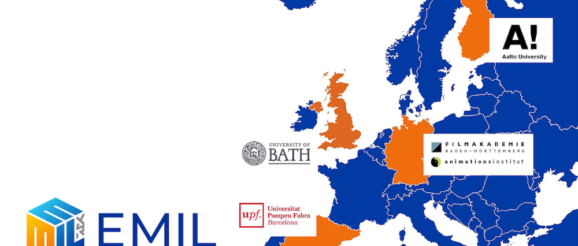The EU supports innovation in XR technology with €5.6 million via the EMIL project – Cineuropa

– The European Media and Immersion Lab project was presented at this year’s 27th edition of the FMX Film and Media Exchange conference in Stuttgart, Germany
EMIL (which stands for European Media and Immersion Lab) is the joint project of four European academic institutions, each of which is an important hub for innovative technologies. The consortium consists of Aalto University in Helsinki and Espoo (Finland), the Filmakademie Baden-Wuerttemberg in Ludwigsburg (Germany), the Universitat Pompeu Fabra in Barcelona (Spain) and the University of Bath (UK).
Each has specific expertise in the field XR. Bath, for example, excels in the development of medical applications, while Barcelona focuses more on cultural heritage, Aalto University specialises in smart clothing, and the strengths of Ludwigsburg University, known for its film studies, lie in narrative storytelling and animation. The aim of EMIL is to support young innovators, startups, researchers and academics and to accelerate developments in the field of XR, taking an interdisciplinary approach.
EMIL started in September 2022 as a pilot project for a period of 30 months. The European Union is funding third party projects to the tune of €5.6 million. This sum will be used for a total of 14 to 18 projects, which will be selected in two stages. The first application period ended at the end of January, and the second will close at the end of June. As with the first round of applications, the winning projects will be announced in May and begin work in the summer. Any individual or collective based in Europe is eligible to participate. Each founding institution will follow the projects closely, and provide parts of their facilities as well as their knowledge.
A project will be funded with a minimum of €250,000, but up to €500,000. “This is a sum far in excess of what one might normally expect,” says Prof. Volker Helzle of the Filmakademie Baden-Wuerttemberg. “Moreover, the institutions will help with equipment and mentoring without charging for it.” These costs are taken over by the EU with a supplementary fund of around €400,000 for each institution.
In order to be able to accelerate XR technology, all the projects have to be already at a certain degree of technology readiness, namely on level 4, as Helzle explains. “It’s not about research that starts from zero, but it’s about innovation.” It’s about bringing knowledge into service, by developing applications. The projects can focus on a broad range of outputs, and touch every aspect of our economic, social and artistic reality. “XR has a big area of potential application,” reminds Helzle. “That can be new applications for medical treatment, for example. It can also contribute to a more sustainable use of our resources.”
Here is also where the Filmakademie sees one of the biggest skills. In the film industry, XR has long been looked at as an exotic technology, but the institution has been pushing for its use and development for decades. This succeeded internally, and the Filmakademie has gained an international reputation for its use of innovative technology in filmmaking or the VFX and Animation industry. But this does not stop at the level of content creation: “we want to promote the understanding that these technologies have more, a wider use. The creative industries have more to contribute,” says Helzle, “as for example, as said before, when it comes to sustainability.”
The keyword is virtual production. At the heart of the EMIL project is the belief that the energy demands needed in filmmaking can be optimised: it is, for example, possible to save up to two thirds of the energy costs for a production when it comes to visual effects or animation, when you are well-prepared. But being more efficient can mean that the quality level is not automatically the same. Solutions can be found for that while working on innovating XR technology. “To find solutions for all kinds of challenges that will have an important impact in the long term,” Helzle says, is his motivation to engage in this project.
More information on the project can be found here.
